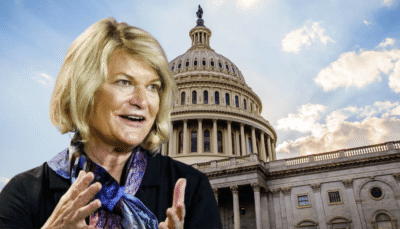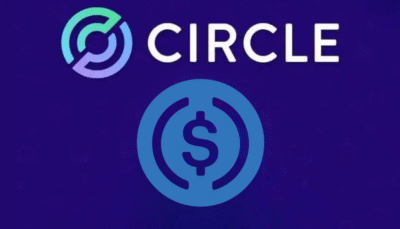The crypto market turned sharply upward this week, and according to Matthias on the latest episode of The CoinRock Show, that momentum may be more than just temporary. Bitcoin surged past $88,000, Ethereum approached $2,100, and meme tokens like Fart Coin led daily gains.
But beyond price action, Matthias emphasized that structural developments—including renewed engagement from regulators and historic venture funding—are reshaping the digital asset space.
“This is a direct reflection,” he said, pointing to the day’s green markets. “Nothing has fundamentally changed when it comes to the macro… But price go up, stories change.”
The sentiment shift follows what Matthias called weeks of “choppiness,” a period in which crypto assets had stagnated. He claimed to have correctly identified a local bottom on March 16 and urged viewers to “check the record” in his private Alpha Group on Telegram. “I went on the record eight days ago saying BTC is close to local bottom plus minus 5%… Huge buying opportunities.”
While some interpreted the surge as a temporary bounce, Matthias said the next leg up could depend on macro signals, particularly related to U.S. trade policy.
“Trump controls the market today,” he said. “We’re one tweet away from 92–93 [thousand] or one tweet away from 79.”
Tariffs, Sentiment, and Market Correlation
Matthias tied the bullish reversal to a delay in Trump-era tariffs originally set to resume on April 2, an update that broke just before the show. “There’s a delay on tariffs,” he noted. “Everything is green on the day… BTC surged back to $88K. ETH is almost at $2,100.”
He warned, however, that crypto is still highly correlated with traditional markets. “As much as we all want decentralization… this is completely correlated to what’s happening with macro. It is a more risk-on version of the NASDAQ.”
Matthias explained that the strong link between crypto prices and macroeconomic conditions undermines the reliability of technical indicators, making trading more dependent on shifts in market sentiment. He pointed to this sentiment-driven volatility as a defining feature of the current crypto environment.
The volatility was reflected in meme tokens such as Fart Coin, which became the day’s biggest gainer. While Matthias acknowledged the humor, he also highlighted the tension such tokens create in institutional narratives.
“We’re trying to sell this to pension funds and institutions,” he said. “Imagine Larry Fink looking at the top 100… Fart Coin is number one.”
Despite that, he speculated that institutional buyers may eventually include meme coins in diversified portfolios. “Look at Dogecoin—it’s been in the top 10 for years.”
Regulatory Shift and SEC’s New Approach
In a rare alignment of market optimism and policy tone, Matthias discussed what he described as a softening stance by the U.S. Securities and Exchange Commission (SEC). On Friday, the agency hosted its first public crypto roundtable titled “Spring Sprint Towards Crypto Clarity.”
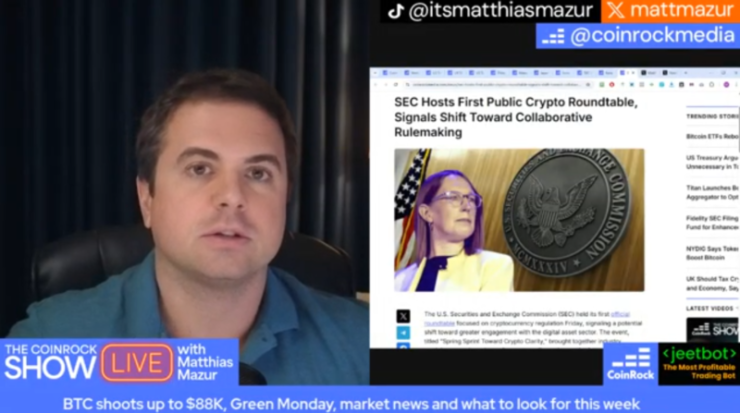
The event, led by SEC commissioners Hester Peirce and Margarita, focused on collaborative rule-making and clearer regulatory frameworks for digital assets.
“This is what everyone in crypto… wants,” Matthias said. “Clarity. Tell us what’s okay and what’s not.”
Matthias emphasized the importance of this shift, contrasting it with the previous regulatory climate under SEC Chair Gary Gensler. “Even the most senior advisors in the crypto world have not been able to talk to the SEC,” he noted.
Notably, the SEC signaled that it may begin exempting certain NFT-based fundraising projects from securities regulation.
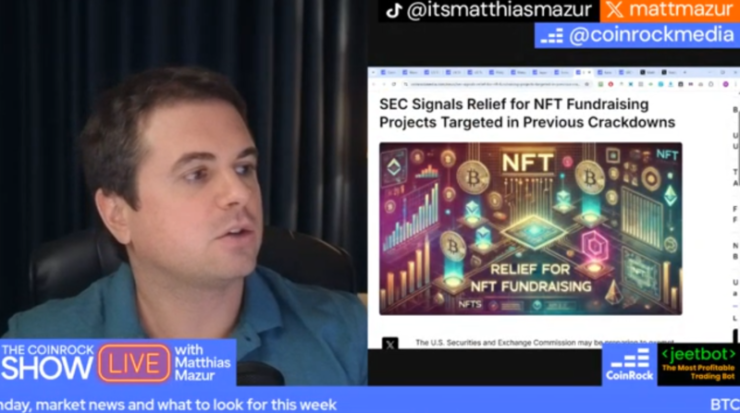
The move would mark a sharp departure from past enforcement actions, such as lawsuits against projects like Mila Kunis’s Stoner Cats, which raised $8 million for an animated series.
“They raised millions,” Matthias said. “And then the SEC sued them without having given them any rules to follow.”
He described the evolving position as part of a broader push for engagement. “The agency’s evolving stance marks a stark contrast,” he said, citing that the SEC now seeks to “untangle what [Peirce] called a mess in digital asset regulation.”
Institutional Confidence Returns with $1.5 Billion Fund
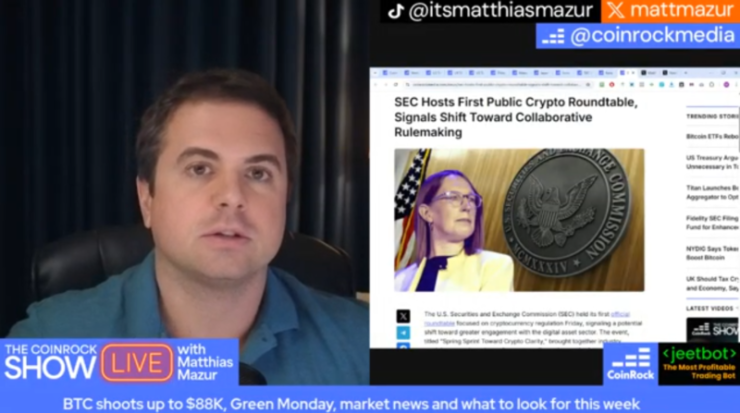
Matthias also spotlighted a new benchmark in venture funding that may signal renewed confidence in the digital asset class. Katie Haun’s venture firm raised $1.5 billion across two new funds—$500 million for early-stage projects and $500 million for later-stage investments—marking the largest fund ever raised by a female VC.
“It’s not just about the number,” Matthias said. “What does this do? It shows others that it’s okay to allocate big money.”
He likened the move to BlackRock’s entry into the crypto space.
“The headline is not the alpha,” he said. “The stamp of approval is.”
Matthias noted that while most Web3-focused VC funds typically range between $1 million and $20 million, a $1.5 billion raise could have a “massive ripple effect.” It could motivate other institutional players to consider nine-figure crypto allocations.
“In traditional finance, $100 to $500 million is a small to medium-sized fund,” he said. “But in crypto, it’s extremely large… This is what you want to see.”
Tariff Decisions and Trading Discipline
Matthias ended the broadcast by encouraging cautious optimism and emphasizing discipline’s importance in trading and investing. He cited a remark from business partner Justin, who recently entered a position in Fart Coin: “Being unemotional about trading—that’s what we’ve been talking about on the show for months.”
Matthias reminded the audience that the macroeconomic backdrop remains unchanged, emphasizing that the three key factors—quantitative tightening (QT), quantitative easing (QE), and interest rates—have seen no new developments.
He pointed out that despite the market’s recent gains, none of these fundamental drivers had shifted over the weekend, suggesting that broader economic realities should still temper short-term optimism.
While he expressed long-term bullishness, he warned viewers not to chase short-term gains or overreact to daily swings. “Never marry your thesis,” he said. “When things change, I will change too.”
He reiterated that periods of market chop offer prime opportunities for accumulation.
“This is when you DCA,” he said, using the acronym for dollar-cost averaging. “You can pick up coins for 50, 30, even 10% of their eventual value.”
As April 2 approaches, all eyes will be on the next set of tariff announcements.
“If Trump comes out saying tariffs are set aside, that would solve the biggest short-term uncertainty,” Matthias said. “That’s what would push us to the next leg up.”
He wrapped up the show with final thoughts on algorithmic stablecoins, pointing to the failures of UST and Luna in the last cycle and the lingering caution that remains in the market. However, Matthias expressed optimism that a new project—possibly Sonic—might succeed where others failed.
He briefly discussed the project’s founder and noted that updates were expected soon. Before signing off, he mentioned having to step away for a team call and invited viewers to visit CoinRock Media’s website for ongoing coverage. He also reminded the audience to tune in early for the next episode, featuring macro analyst Matty Greenspan in a live session followed by a news recap.


